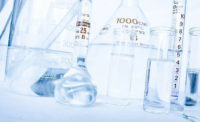Covestro Products Tested in Bridgestone World Solar Challenge

LEVERKUSEN, Germany — With a new solar-powered racing car, a team of 45 students from RWTH Aachen University and FH Aachen will take part in the Bridgestone World Solar Challenge 2019 in Australia for the second time in October. In what is probably the toughest solar race on the planet, teams from all over the world will compete to overcome the 3,000-kilometer stretch from Darwin to Adelaide as the fastest with self-built vehicles. Also on the starting line are innovative materials from Covestro, the main sponsor of this year's project.
Ultra-light cars with good aerodynamics and energy efficiency have the best chances for a good result in the solar race. The Sonnenwagen Team from Aachen spent two years fine-tuning the construction of their new speedster, paying particular attention to streamlined structures, smooth surfaces and feather-light materials.
Covestro is using the project to test different materials under the harsh climatic conditions of the track. In the Australian desert, temperatures of up to 45 °C and intense UV radiation prevail in October. A high concentration of dust in the air is also typical for this time of year.
In-the-Field Test: Car Paint with Bio-Based Hardener
The climatic conditions have above all an influence on the outer clear coat. The Covestro Sonnenwagen is furnished with a two-layer polyurethane car refinish paint system from PPG, one of the world's leading paint manufacturers with special expertise in automotive coatings. It imparts a smooth, high-gloss surface to the car body and resists the harsh climatic conditions. It is also well protected against scratches. The highlight here is the coating formulation with the bio-based hardener Desmodur® eco N 7300 from Covestro. 70 percent of its carbon content comes from biomass, which reduces the ecological footprint by around 30 percent.
“Covestro and PPG have been working together in the field of coatings development for many years," said Markus Mechtel, Marketing Manager for Automotive Applications in the Coatings, Adhesives, and Specialties segment at Covestro. "With this joint development, both partners want to demonstrate how a coating can also make a contribution to sustainable mobility.” Ignasi Roig, Product Platform Manager Refinish in the EMEA region at PPG, added, "The bio-based hardener meets the sustainability standards of our customers as well as our own. It is a near-drop-in solution where the user does not have to compromise on the quality of the coating.”
Adhesive Endurance Test
A wide range of materials, including high-quality plastics, composites and metals, were used to make the new car lightweight, aerodynamic and robust. The best way to permanently bond such different substrates is by gluing them together. On the trip through the Australian outback, the most important thing is the permanently high quality of the adhesive bond to withstand the high temperatures, the dryness and last but not least the vibrations during the run.
For the Covestro Sonnenwagen, the Aachen team relies on two-component polyurethane adhesives from Sika Automotive, which are based on raw materials from Covestro's Desmodur® and Desmophen® ranges. The products from the SikaForce® product range feature outstanding mechanical strength along with elasticity and stretch-ability.
Looking for a reprint of this article?
From high-res PDFs to custom plaques, order your copy today!





